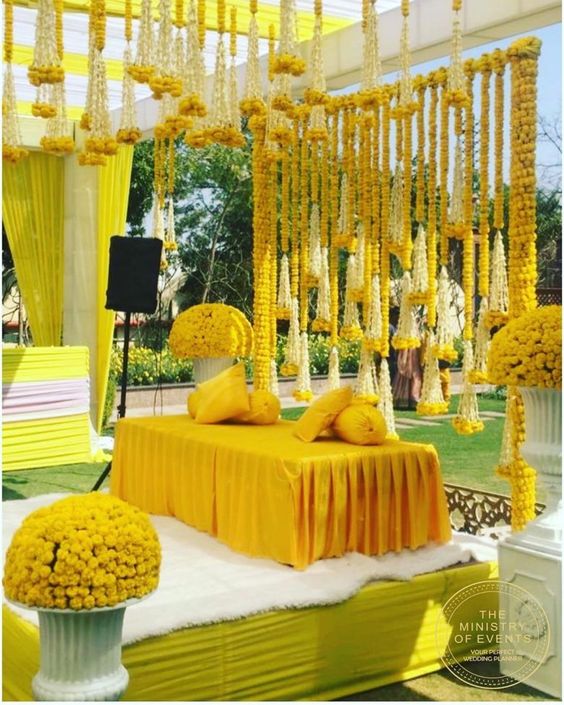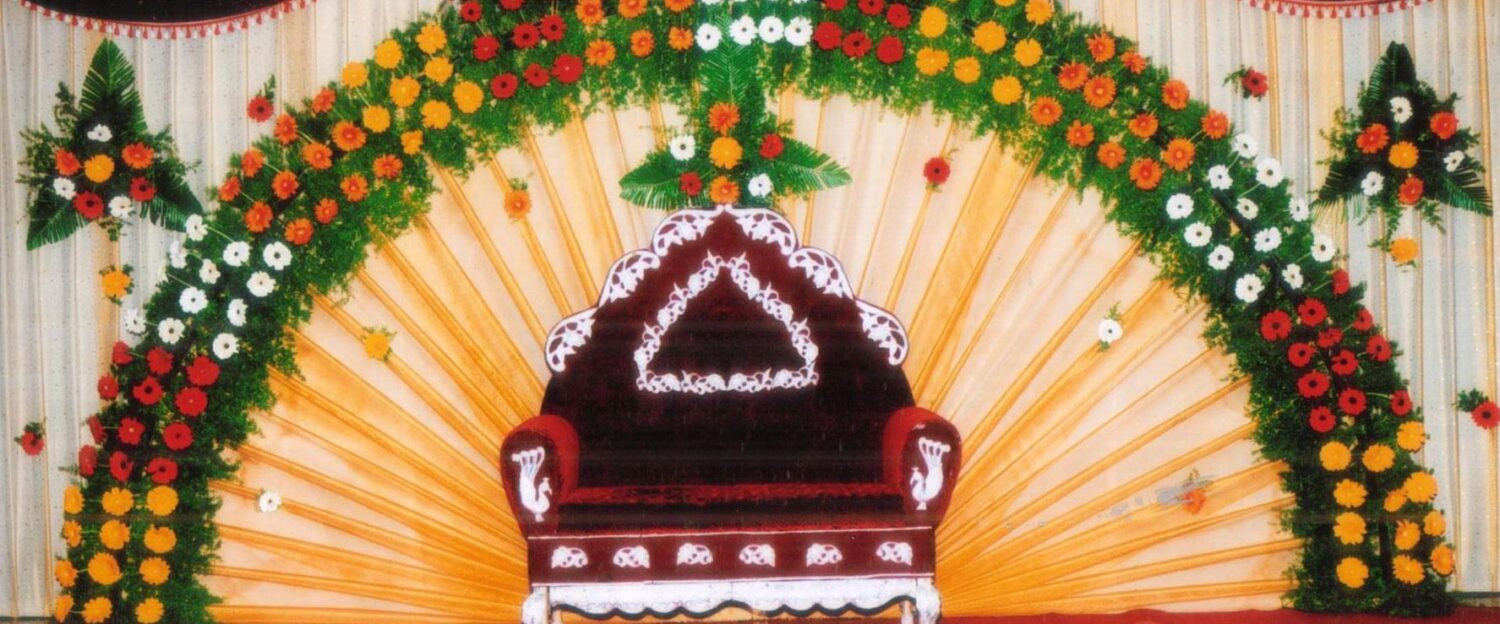India, a land rich in cultural diversity, is known for its vibrant and colourful traditions. Two ceremonies that add a splash of colour and joy to Indian celebrations are the Haldi (turmeric) and Mehndi functions. These pre-wedding rituals are deeply rooted in the country’s cultural fabric, bringing together families and friends in a celebration of love, tradition, and beauty.
Haldi Ceremony
The Haldi ceremony, also known as Pithi ceremony, is a significant pre-wedding ritual celebrated in various cultures across India. This ceremony is marked by the application of a special paste made from turmeric, sandalwood, rose water, and other auspicious ingredients on the bride and groom’s body. The paste is applied by close family members and friends, and it is believed to have purifying and beautifying properties.

Symbolism of Turmeric (Haldi)
Turmeric, with its vibrant yellow colour, is not just a spice in Indian households but is considered sacred. In the Haldi ceremony, the turmeric paste symbolizes purity, prosperity, and the warding off of evil spirits. It is believed to bring a natural glow to the skin, preparing the couple for their big day.
Joyous Atmosphere
The Haldi ceremony is a joyous occasion filled with laughter, music, and dance. Family and friends come together to celebrate and bless the couple. The yellow hue of turmeric adds a visual spectacle to the event, creating a lively and festive atmosphere.
Traditional Attire
During the Haldi ceremony, it is customary for the bride and groom to wear simple and comfortable attire as the turmeric paste can stain elaborate wedding outfits. The focus is on the significance of the ritual rather than elaborate attire.
Mehndi Function
The Mehndi function is another pre-wedding celebration that involves the application of henna, a natural dye, on the bride’s hands and feet. This intricate and temporary art form has been a part of Indian culture for centuries, symbolizing beauty, auspiciousness, and the bond of matrimony.
Artistry and Symbolism
Mehndi, or henna, is applied in elaborate patterns, often incorporating symbols that represent fertility, joy, and love. The process of applying Mehndi is an art form in itself, and it is common for intricate designs to be created, telling a unique story for each bride.
Cultural Diversity
Different regions in India have their own unique Mehndi traditions. In North India, the Mehndi night is a separate celebration, while in South India, it is often combined with other pre-wedding functions. Regardless of regional variations, Mehndi functions are a time for women to come together, share stories, and celebrate the upcoming union.
Blessings and Superstitions
Mehndi is not only a form of body art but is also associated with blessings and superstitions. It is believed that the darker the Mehndi colour, the stronger the love between the couple. Additionally, hidden initials or names of the groom are often incorporated into the Mehndi design, adding an element of surprise for the groom to discover.
The Haldi and Mehndi functions in India are more than just pre-wedding rituals; they are a celebration of love, tradition, and the coming together of families. These ceremonies showcase the rich cultural tapestry of India, where vibrant colours, sacred rituals, and the warmth of family and friends create memories that last a lifetime. The Haldi and Mehndi functions truly embody the spirit of Indian weddings, adding a touch of tradition and beauty to the journey of two individuals embarking on a lifelong commitment.
If you are looking for the best partner to organize your Haldi & Mehandi Function, Join hands with Silver Spell Events.
We are just a call away…please Call 9711483666
OR Click here to Contact us
Also Read

